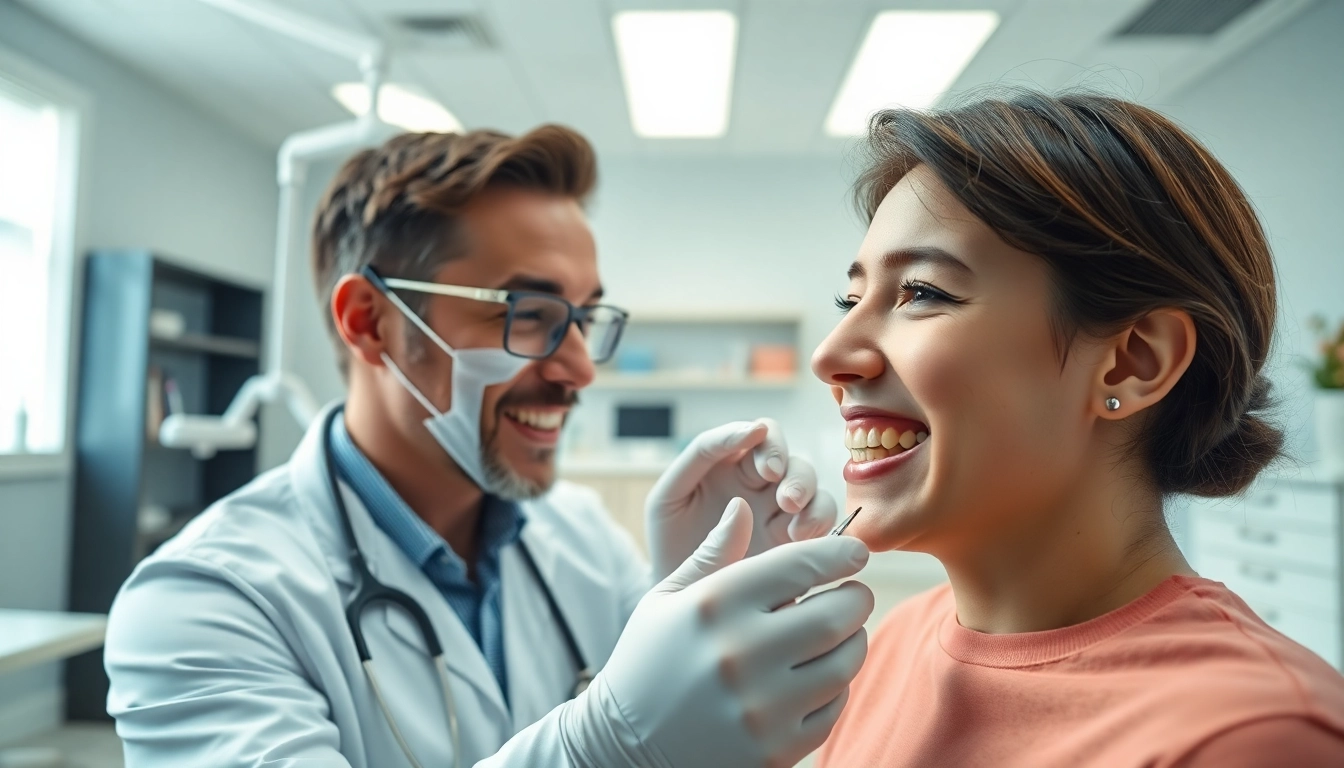Understanding Orthodontics and Its Importance
What is Orthodontics?
Orthodontics is a specialized branch of dentistry that focuses on diagnosing, preventing, and treating dental and facial irregularities. It primarily deals with the alignment of teeth and jaws, ensuring that patients can achieve not only a confident smile but also optimal dental function. Orthodontic treatments can address issues such as overcrowded teeth, gaps between teeth, overbites, underbites, and crossbites. The importance of orthodontics extends beyond aesthetics; it plays a crucial role in ensuring long-term oral health, enhancing chewing ability, and promoting overall wellbeing.
The Impact of Orthodontics on Dental Health
Investing in orthodontic treatment can lead to significant improvements in dental health. Misaligned teeth can cause plaque accumulation, leading to cavities and gum disease. Furthermore, improperly aligned jaws can contribute to jaw pain and temporomandibular joint disorders (TMJ). By correcting these issues, an orthodontist Myrtle Beach enhances not only the aesthetic appeal of smiles but also the functionality of teeth. This preventive approach ensures a healthier mouth and can even reduce the need for more extensive dental work in the future.
Common Misconceptions About Orthodontics
Myths about orthodontics can often deter potential patients from seeking necessary treatment. One common misconception is that orthodontic treatment is only for children or teenagers. In reality, adults can also benefit significantly from orthodontics at any age. Another fallacy is that orthodontic treatment is merely cosmetic; however, the functional benefits such as improved bite and enhanced oral hygiene also matter. Understanding the facts can inspire individuals to embrace the idea of seeking orthodontic care.
Choosing the Right Orthodontist Myrtle Beach
Factors to Consider When Selecting an Orthodontist
Choosing the right orthodontist is crucial for a successful treatment experience. Key factors include the orthodontist’s qualifications, experience, and the range of treatments offered. Moreover, consider the ambiance of the clinic and how comfortable you feel during consultation. A friendly, knowledgeable staff can greatly enhance your experience.
How to Evaluate Qualifications and Experience
When assessing an orthodontist’s qualifications, look for board certification and memberships in professional organizations. Experience, particularly with the specific type of treatment you are considering, is invaluable. Don’t hesitate to ask potential orthodontists about their training and clinical experience as it relates to modern orthodontic technology and methodologies.
The Importance of Patient Reviews and Testimonials
Patient reviews and testimonials can provide insight into the quality of care and patient satisfaction at an orthodontic practice. Look for reviews that mention the thoroughness of care, the level of communication, and overall treatment outcomes. Websites, social media platforms, and local community forums can serve as excellent resources for gathering this information.
Types of Orthodontic Treatments Available
Traditional Braces: Pros and Cons
Traditional metal braces are one of the most recognized forms of orthodontic treatment. Comprising brackets and wires, they apply consistent pressure to move teeth gradually into alignment. The pros include the effectiveness in treating a wide range of orthodontic issues and the fact that they are often more affordable than other treatments. On the downside, discomfort during adjustment visits and aesthetic concerns related to visibility can deter some patients.
Invisalign Options for Aesthetic Appeal
For those looking for a more discreet option, Invisalign presents an appealing alternative. This method uses clear, removable aligners that fit over the teeth, gradually shifting them into place without the need for brackets and wires. The main benefits include comfort, ease of cleaning, and the ability to remove them for eating or important events. However, compliance is essential; the success of treatment relies on wearing the aligners for the recommended amount of time each day.
Advanced Treatments and Technologies
The field of orthodontics continually evolves, with new technologies and treatment options consistently emerging. Options include lingual braces, which are placed on the back of the teeth for added invisibility, and accelerated orthodontics, which can shorten treatment time significantly. It’s valuable to discuss the latest advancements with your orthodontist to find the best possible treatment plan tailored to your needs.
The Orthodontic Treatment Process Explained
Initial Consultation: What to Expect
Your journey with an orthodontist typically begins with an initial consultation. During this visit, an orthodontist conducts a thorough examination, often utilizing X-rays to assess your specific needs. This appointment allows you to ask questions about treatment options and estimate timelines and costs involved.
Creating a Customized Treatment Plan
Once a comprehensive assessment is complete, your orthodontist will develop a customized treatment plan tailored to address your unique dental needs. This plan includes the type of orthodontic appliances to be used, estimated treatment duration, and scheduled follow-up visits to monitor progress.
Monitoring Progress and Adjustments
Regular follow-up appointments are crucial in the orthodontic treatment process. During these visits, the orthodontist will monitor your progress, make any necessary adjustments to your braces or aligners, and ensure that your treatment is on track. Open communication regarding any discomfort or concerns during this phase is vital for maximizing results.
Caring for Your Smile During and After Treatment
Best Practices for Oral Hygiene
Maintaining excellent oral hygiene during orthodontic treatment is essential. Braces and aligners can make proper cleaning more challenging, creating areas where food particles may accumulate. Patients should be diligent in brushing at least twice daily and flossing regularly, using tools like interdental brushes or floss threaders designed for braces if necessary. Additionally, regular dental check-ups can help avoid potential cavities during the treatment process.
Tips for Maintaining Dental Health Post-Treatment
After the removal of braces or cessation of aligner use, patients often wonder how to maintain their new smile. Continuing diligent oral hygiene and regular dental visits significantly aid in this effort. Moreover, adopting a dental-friendly diet and avoiding sugary snacks can prevent plaque buildup and ensure long-lasting results.
Understanding Retainers and Their Significance
Retainers play a fundamental role in the orthodontic treatment process, acting as a stabilizing agent to keep teeth in their new positions. After active treatment, wearing a retainer as prescribed is essential to prevent your teeth from shifting back to their original alignment. Various options exist, including removable and fixed retainer types, each offering specific advantages depending on individual needs.




